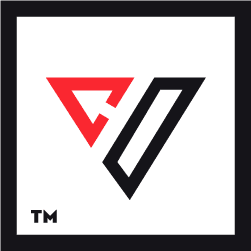

It’s easy to identify good branding when we see it. For example, we recognize an image of the classic mouse ears and immediately associate it with The Walt Disney Company. Consumers can identify Apple products’ iconic design and ethos, from iMacs to iPhones. This is thanks to solid branding.
Customers remember and are drawn to branding, so companies must establish a clear and compelling brand strategy and guide. That’s why getting your clients’ ideas written down is crucial—these insights will shape future branding, marketing strategy, and customer communications and decisions.
The best way to accomplish this is with a branding questionnaire—a set of questions designed to obtain essential information about a business to achieve the desired brand identity. Let’s explore this in further detail.
What is a Branding Questionnaire?
A branding questionnaire is a set of questions that help a company shape its brand identity, brand voice, brand attributes, brand values, strategic approach, and other elements. It is commonly a brand questionnaire to better understand the audience, their pain points, and what matters most regarding products and services.
It is a very strategic approach to creating the foundation for its brand identity. It provides an excellent view of the outside world, allows a brand to gather client information, and positions itself in the right direction for continued growth and a greater return on investment (ROI).
Brand Questionnaire
What Each Brand Must Understand – It’s More Than Just a Logo!
There are many things a brand must understand to develop a clear brand identity. First, it’s more than just a logo and a company’s goals. It’s also a brand’s personality and visual identity. Each branding questionnaire can help to identify these elements and more by honing in on your target customers and creating a brand identity that will inspire confidence in consumers.
Second, creating a clear brand identity allows a brand to build brand awareness. Brand awareness can seem like an ambiguous concept because it is. Brand awareness will likely ruffle your feathers for marketers and business owners who like to gauge success with precise numbers.
But just because it isn’t a metric that can be perfectly determined doesn’t mean it doesn’t carry value. Brand awareness is essential for business success and overall marketing goals. This is because brand awareness fosters trust.
Brand awareness over time builds brand equity—a brand’s value determined by consumer experiences and overall perception of the brand—positive experiences and perception equal positive brand equity, and the same goes for negative notions.
So, in short, a clear and impactful brand identity leads to the development of brand awareness and, over time, builds brand equity. This is the key to building customer loyalty.
What Purpose Does Your Brand Serve?
First thing’s first, for an individual to become a new client, they must see that a brand creates value. Its products and services must fill a consumer’s need and answer the question of why. Why does your brand matter?
You can answer this question by completing a BrandBuild™ process. This includes understanding a brand’s specific values, vision, why, target audience, tone and personality, competitors, market differentiators, and story.
What are Your Brand’s Values?
Another topic in your brand identity questionnaire should be your values. This is similar to your morals and ethics and often includes your mission and positioning statements.
The best brands combine physical, emotional, and logical elements into an ideal customer experience that you value as much as they do. This is, in short, your brand’s values. These brand values are the beliefs that your business stands for. These values are a guide for your brand story, actions, behaviors, and decision-making process. In times of making difficult choices, these values will guide you to what’s more important to your business, your brand’s identity, and the people you’re serving. Taking the decision which is correct by all means will become effortless.
Company Mission Statement
Your Company Goals are explained in a line or two
Product / services positioning statement
Product or service mission statement similar to a company mission statement
The benefit of your product/service
Ways in which you are helping your audience
Five words that make a solid brand identity
Your brand described in 5 words
Three messages your brand communicates
A message relevant to our Target Audience
Value proposition
Problem-solving solutions for your ideal customers – Why should someone buy your product?
What is Your Vision & Why?
When creating a clear vision and why for your brand, it’s an excellent idea to complete customer interviews with your ideal customer. This helps to understand the client’s perspective better.
This interview typically includes a branding questionnaire with insight into the personal brand, a creative brief, and a few questions on what problems the consumer has, why they would or wouldn’t spend time and resources on your product or service, and what other tools or products would be of interest.
Branding questionnaires may also include visuals and other creative elements to understand a client’s first impression and appeal or lack thereof to specific components of a client’s brand identity.
Who is Your Target Audience?
There’s a saying in digital marketing that says, “If you try to sell to everyone, then you’ll end up selling to no one.”
Online Success means converting as many leads to customers as possible. This leads to many organizations sharing their business messages haphazardly. After all, the wider your reach, the more ideal customers you can get, right? Well, that may not be a great idea.
Targeting specific kinds of people doesn’t lead you to exclude others who don’t meet your criteria. It allows you to pay attention to those who are most likely to buy from you. This can lower your customer acquisition cost and earn more by targeting the most important leads in your network.
Learning how to identify target audience personas ensures that you can take your brand to market in the most cost-effective and efficient way.
An excellent way to understand your TG is to create a buyer persona. In five words, create a robust buyer persona.
Create a Buyer Persona
Based on data and research, buyer personas are semi-fictional representations of your ideal customers. They help you focus your time on qualified prospects, guide product development to suit the needs of your target customers, and align all work across your organization (from marketing to sales to service).
As a result, you’ll be able to attract high-value visitors, leads, and customers to your business, who you’ll be more likely to retain over time.
More specifically, understanding your buyer persona(s) is critical to driving content creation, product development, sales follow-up, and anything related to customer acquisition and retention.
So, how do you make one?
The good news is that they aren’t that difficult to create. It’s all about obtaining your market research and customer data and then presenting that information within your business.
Buyer personas help you understand your customers (and prospective customers) better. This makes it easier for you to tailor your content, messaging, product development, and services to meet the specific needs, behaviors, and concerns of the members of your TG.
Brand Questionnaire
What is Your Brand’s Personality & Tone?
A brand’s personality is the human characteristics you attribute to that brand. In other words, it’s how you’d describe a new or existing brand if it were a person. This is an essential component of any rebranding project or branding project as it allows to reach the ideal customer.
Company or business personality shines through in messaging, images, and overarching marketing campaigns. This goes hand in hand with your brand’s tone, as the feel of the creative assets and tone of voice is essential to connecting with the right audience.
Additionally, consistency is critical to developing a solid brand identity. If the brand personality differs from your company’s website and social media accounts, it is more challenging for consumers to discover who your brand is and what it stands for.
Your company mission statement, marketing strategy, and brand identity should well represent your intended brand’s tone and personality.
Your social channels and website should include a responsive design and represent the visual preferences of your potential clients and ideal customer. An effective branding questionnaire will consist of questions that guide the choice of tone and personality when developing a brand’s identity.
Who are Your Brand’s Competitors?
A brand identity questionnaire is also the perfect place to ask about competitors in the branding or marketing industries. It’s helpful to gauge another client’s business, other freelancers, and brands that may appeal to the same target audience.
Branding is a strong differentiator, so by understanding your competitors, you can ensure your branding stands out.
Start with your product and identify competitors who are in direct competition. A few effective techniques for identifying direct competitors:
- Market Research: Find out other products that can compete with yours. Then take a closer look at their companies, products, and marketing strategy to outperform them.
- Solicit Customer: FeedbackOnce a customer is loyal to your product, you can take the risk of asking them which other brands were they looking out for. These might be brands you haven’t even heard of.
- Check Online Communities on Social Media or Community Forums: People these days take suggestions online through community forums. Going through these open conversations also you can identify your competitors.
A Business has an influence on your selling process as much as your direct competitors are your indirect competitors. So how do you discover them and track them effectively?
- Keyword Research: Conduct a competitive SEO analysis and find out if your competitors trying to make space on Google.
- Analyzing Google’s Search Engine Results Page: Your indirect competition is also writing on topics close to your proposition. Use your product keywords to find these blogs and articles in your indirect competition.
- Take a Look at Paid Data: Google AdWords can help you scan important keywords for your business. Paid data mostly makes you aware of the new competitors in the market.
What is Your Brand’s Market Differentiator?
Product, service, and brand market differentiation refers to the strategy used by businesses to highlight the unique features and benefits of their products or services. This helps them differentiate from competitors. A brand’s sales and marketing team will then communicate these unique qualities via campaigns and social promotions and use them to demonstrate the product or service’s competitive advantage.
Also known as a differentiation strategy, product differentiation is a method for companies to make their products stand out and grab consumers’ attention. This allows a company to develop a strong brand that past, present, and future customers will recognize. It also increases the likelihood that the consumer will select your product or service again over another generic or undifferentiated product or service.
Here are some qualities to consider when seeking to differentiate your brand:
- Educate, innovate, and elevate
- Invest in high-quality resources to create high-quality products and services
- Create a robust research and development team
- Implement marketing and sales strategies that communicate the benefits and competitive advantage of the product or service
What is Your Brand’s Story?
Storytelling utilizes truth and narrative to articulate something to your audience. Stories can be factual, embellished, or improvised to explain the core message better.
Storytelling is a classic art form with a place in every culture and society. This is because stories are universal—everyone can understand them, regardless of dialect, hometown, or heritage. Stories encourage imagination and create a sense of community amongst listeners and tellers alike.
It’s a great idea to showcase your brand’s story in each visual and written creative asset. Your marketing needs to have a clear direction, purpose, and a differentiator to stand out from competitors. Your company name, new brand identity, and logo communicate your story.
Branding Questionnaire: Questions for Your Internal Team
In addition to an external branding questionnaire, it’s an excellent idea to create a branding questionnaire template for your internal team. Business today requires a robust visual identity, from your marketing materials to your team members.
After all, as a business owner, your internal team must be on the same page. This allows you to maintain a strong brand identity as your employees, from the marketing department to web designers, graphic designers, and brand ambassadors, exhibit the right character traits for your brand.
This will help you acquire new business, elevate your brand, and thrive as clients see that your company stands out from other brands.
Customers remember and are drawn to branding, so companies must establish a clear and compelling brand strategy and guide. That’s why it’s crucial to get your clients’ ideas written down—these insights will shape future branding, marketing, and customer communications and decisions.
And the best way to accomplish this? A branding questionnaire that builds solid brand identity.







